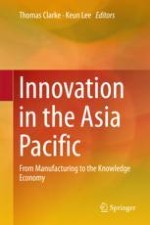2018 | OriginalPaper | Chapter
12. Developing Human Capital for Knowledge Based Economies
Authors : Thomas Clarke, Soheyla Gholamshahi
Published in: Innovation in the Asia Pacific
Publisher: Springer Singapore
Activate our intelligent search to find suitable subject content or patents.
Select sections of text to find matching patents with Artificial Intelligence. powered by
Select sections of text to find additional relevant content using AI-assisted search. powered by
